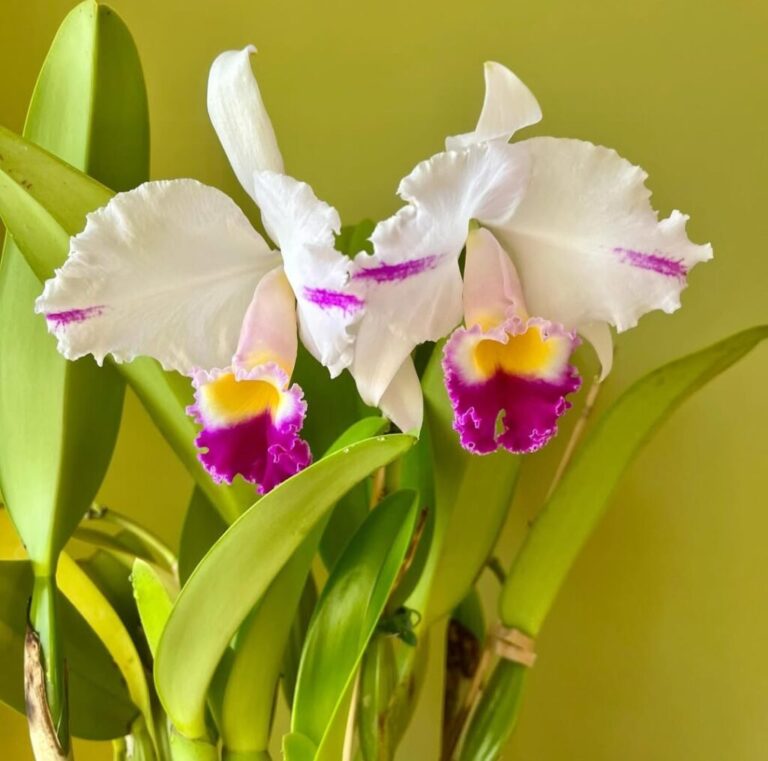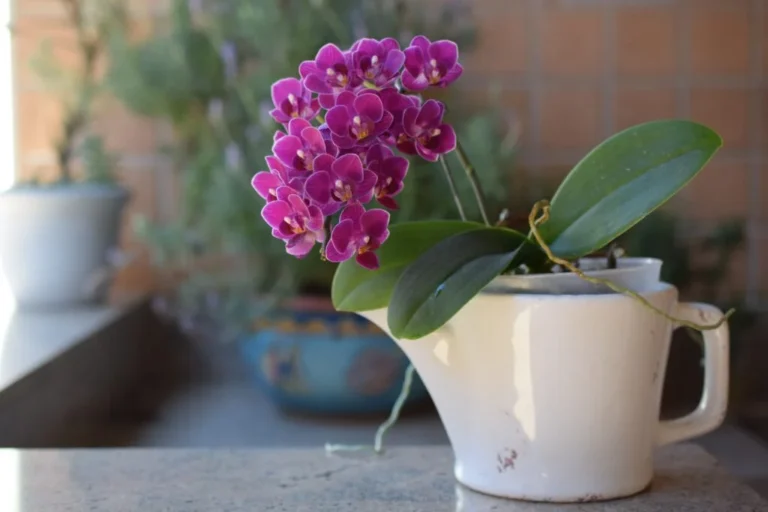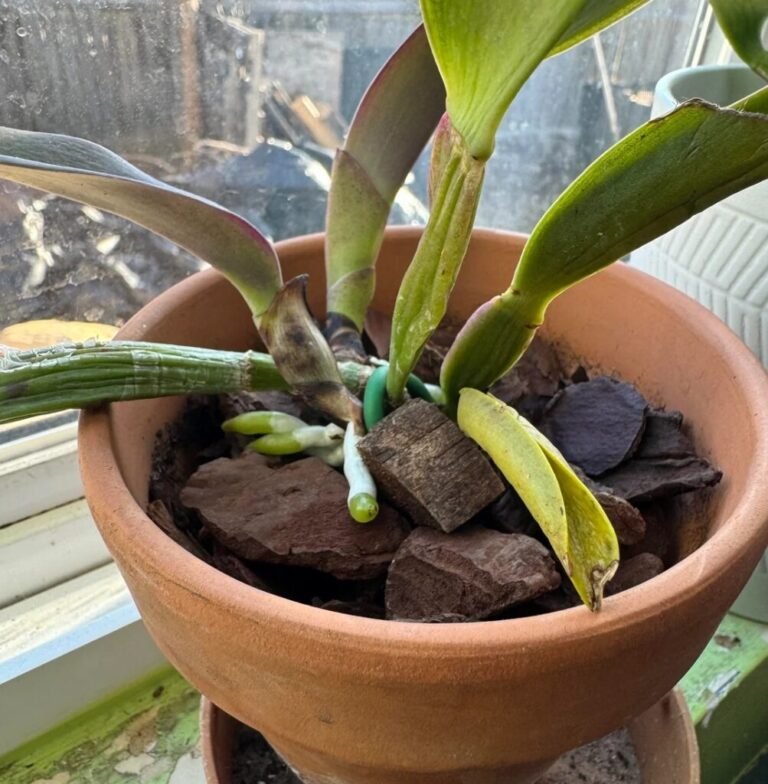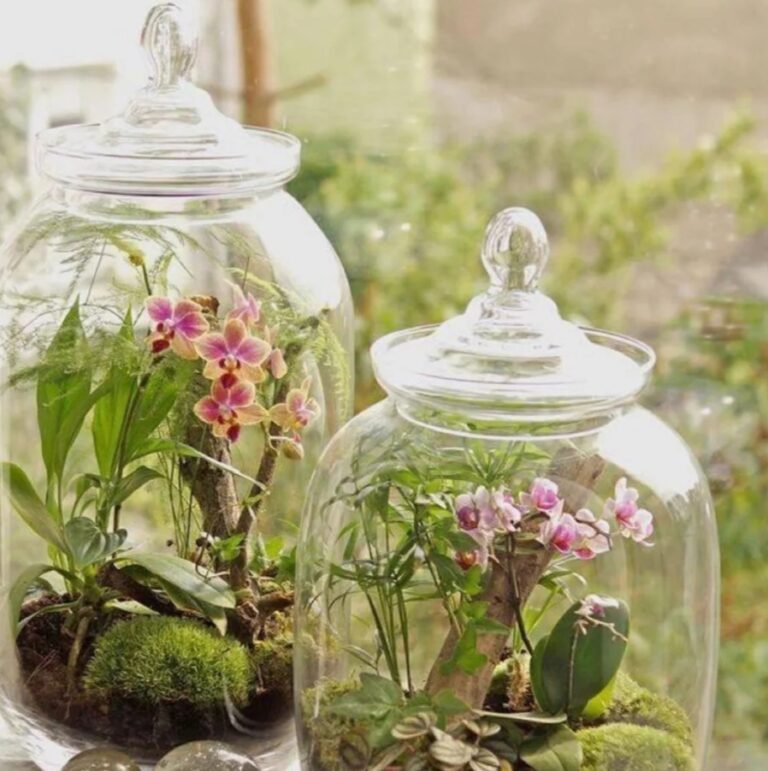Reblooming a white Phal orchid is a rewarding process that requires patience, consistency, and the right care techniques. By following the 16 essential steps outlined in this guide, you can successfully encourage your orchid to bloom again and enjoy its stunning white flowers for months.
Remember, the key to reblooming lies in providing the right balance of light, temperature, humidity, and nutrients while allowing the plant to go through its natural growth cycle. Regular maintenance, such as proper watering, repotting when necessary, and keeping an eye out for pests or diseases, will ensure your orchid stays healthy and vibrant.
With a little effort and dedication, your white Phalaenopsis orchid can continue to bloom year after year, bringing beauty and elegance into your home. Now that you have the knowledge and tools to help your orchid rebloom, it’s time to put these steps into practice and watch your plant thrive!

- 1 Understanding the White Phal Orchid Bloom Cycle
- 2 Time Table for Reblooming Your White Phal Orchid
- 3 Step 1: Choose a Healthy White Phal Orchid
- 4 Step 2: Provide Optimal Lighting Conditions
- 5 Step 3: Maintain the Right Temperature for Spiking
- 6 Step 4: Watering Your White Phal Orchid Correctly
- 7 Step 5: Fertilize for Healthy Blooms
- 8 Step 6: Choosing the Right Potting Medium
- 9 Step 7: Pruning the Old Flower Spike
- 10 Step 8: Humidity Control for Reblooming
- 11 Step 9: Avoiding Pests and Diseases
- 12 Step 10: Repotting for Long-Term Success
- 13 Final Troubleshooting Guide: Why Won’t My White Phal Orchid Rebloom?
- 14 FAQS
Understanding the White Phal Orchid Bloom Cycle
The bloom cycle of a White Phal Orchid is different from that of many other flowering plants. It typically follows these stages:
Growth Phase (Spring-Summer): The orchid develops strong leaves and roots to store energy.
Spiking Phase (Early Fall): A flower spike emerges as temperatures drop.
Blooming Phase (Winter-Spring): Flowers open and remain for 2-4 months.
Resting Phase (After Blooms Fall): The plant gathers energy for the next cycle.
Tip: Keep track of your orchid’s bloom cycle by maintaining a simple plant journal. This helps you spot patterns and make adjustments accordingly.
Time Table for Reblooming Your White Phal Orchid
| Step | Timeframe | Action Required |
|---|---|---|
| Growth Phase | Mar – Aug | Fertilize regularly, provide bright indirect light |
| Spike Formation | Sep – Oct | Reduce temperature by 5-10°F at night |
| Flowering Phase | Nov – Mar | Maintain humidity and avoid moving the plant |
| Resting Phase | After blooms fall | Prune old spikes, repot if needed |
Tip: If your orchid isn’t following this timeline, adjust light, temperature, and watering habits accordingly.
Step 1: Choose a Healthy White Phal Orchid
If you’re starting fresh, selecting a healthy orchid is the foundation for successful reblooming. Look for:
Bright green leaves (firm, not wrinkled)
Thick, silver-green roots (avoid mushy or dry roots)
An intact flower spike (if buying while in bloom)
Tip: Avoid orchids with black spots, excessive yellowing, or weak stems, as these may indicate disease or poor health.
Step 2: Provide Optimal Lighting Conditions
Phalaenopsis orchids thrive in bright, indirect light. Placing your orchid near an east or north-facing window ensures it gets enough light without burning its leaves. If natural light is insufficient, supplement it with an LED grow light.
Common Problem: If your White Phal Orchid has dark green leaves, it may not be receiving enough light. Pale yellow leaves, on the other hand, may indicate too much sun.
Tip: Use a sheer curtain to diffuse direct sunlight and prevent leaf burns.
Step 3: Maintain the Right Temperature for Spiking
Temperature plays a crucial role in encouraging reblooming. A 5-10°F temperature drop at night (to around 60-65°F) in early fall triggers flower spike formation.
Common Problem: If your orchid refuses to rebloom, your home may be too warm at night.
Tip: Move your orchid to a slightly cooler room in the evening to encourage reblooming.
Step 4: Watering Your White Phal Orchid Correctly
Overwatering is the #1 cause of orchid death. Stick to these rules:
Water once a week in winter, twice a week in summer.
To prevent shocking the roots, use water that is at normal temperature.
Always let the pot’s surplus water run off.
Common Problem: Yellow leaves can indicate overwatering, while wrinkled leaves suggest underwatering.
Tip: Use a moisture meter or the “finger test” (insert a finger an inch deep into the potting medium) to check if watering is needed.
Step 5: Fertilize for Healthy Blooms
Use a balanced orchid fertilizer (20-20-20) diluted to half strength every two weeks during the growth phase. Once the spike appears, switch to a bloom booster fertilizer (10-30-20) to encourage flowering.
Common Problem: Excessive fertilizer can lead to salt buildup, burning the roots.
Tip: Flush the pot with clean water once a month to remove excess fertilizer salts.
Step 6: Choosing the Right Potting Medium
White Phalaenopsis Orchids grow best in a well-draining mix such as:
Bark chips
Sphagnum moss
Perlite
Common Problem: If roots turn black and mushy, your medium may be retaining too much moisture.
Tip: Refresh the potting mix every 1-2 years to prevent rot and nutrient depletion.
Step 7: Pruning the Old Flower Spike
After blooming, you have two options:
Leave it alone – If it’s still green, it may rebloom.
Trim it back – Cut just above a node to encourage a new spike.
Common Problem: If your orchid isn’t reblooming, it may need a stronger root system first.
Tip: If the spike is brown and dry, cut it off completely.
Step 8: Humidity Control for Reblooming
Phalaenopsis orchids need 50-70% humidity. If your home is dry, use a humidity tray or a small humidifier.
Common Problem: If buds fall off before opening, humidity may be too low.
Tip: Group plants together to naturally increase humidity.
Step 9: Avoiding Pests and Diseases
Common orchid pests include:
Spider mites (tiny webbing)
Mealybugs (white cotton-like spots)
Fungus gnats (caused by overly moist soil)
Common Problem: If leaves turn black or brown, fungal infections may be present.
Tip: Wipe leaves with a diluted neem oil solution to prevent pests.
Step 10: Repotting for Long-Term Success
Repot your orchid every 1-2 years, preferably after it finishes blooming.
Common Problem: If roots grow out of the pot or the mix smells bad, it’s time to repot.
Tip: Choose a pot with drainage holes to prevent root rot.
Step 11: Managing Light During Blooming
Once the flower spike has emerged, it’s crucial to maintain consistent lighting. Avoid sudden changes in placement, as orchids are sensitive to their environment.
Keep your White Phal Orchid in bright, indirect light.
Rotate the pot slightly every few days to ensure even growth.
Avoid placing the orchid under direct sunlight, which can scorch flower buds.
Common Problem: If your orchid forms a flower spike but the buds turn yellow and fall off, it’s likely due to light stress or sudden temperature changes.
Tip: Keep your orchid in the same spot during blooming to prevent bud drop.
Step 12: How to Prevent Bud Blast
Bud blast is when flower buds wither before opening. This is a frustrating issue that many orchid growers face, but it’s often preventable.
Common Causes of Bud Blast:
✅ Low humidity – Dry air causes buds to dehydrate.
✅ Sudden temperature changes – Keep temperatures between 65-75°F (18-24°C).
✅ Ethylene exposure – Avoid placing your orchid near ripening fruits or strong-smelling chemicals.
Tip: If your orchid is near an air vent or heater, move it to a more stable environment to prevent bud blast.
Step 13: Training the Flower Spike for a Beautiful Display
As your White Phal Orchid spike grows, you can train it to create a graceful arch.
Insert a stake into the potting mix near the base of the spike.
Secure the spike loosely with soft plant clips or ties.
Adjust the ties as the spike grows, ensuring a gentle curve.
Common Problem: If your orchid’s spike grows crooked, it may be reaching for light.
Tip: Instead of moving the orchid, gently rotate the spike’s direction using soft ties.
Step 14: Maximizing the Bloom Lifespan
Once your White Phal Orchid is in full bloom, you’ll want the flowers to last as long as possible.
Keep humidity levels at 50-70% to prevent dehydration.
Avoid excessive handling—oils from fingers can damage delicate petals.
Maintain stable temperatures; avoid drafts and sudden changes.
Common Problem: Flowers fading too quickly? Check humidity and temperature stability.
Tip: Spritz the air with water around your orchid (but not directly on flowers) to maintain humidity.
Step 15: What to Do After Blooms Fall
When the last flower drops, your White Phal Orchid will enter a resting phase. This is a crucial time for reblooming preparation.
Inspect the flower spike: If it’s still green, you can trim just above the second node to encourage a secondary bloom.
Fertilize lightly: Use a balanced orchid fertilizer at half-strength.
Reduce watering slightly to allow your orchid to rest.
Common Problem: If your orchid refuses to rebloom after a long time, it may need better lighting or temperature drops.
Tip: Be patient! Some orchids take several months before producing a new spike.
Step 16: Long-Term Orchid Care for Consistent Reblooming
To keep your White Phal Orchid reblooming year after year, follow these essential long-term care tips:
✅ Repot every 1-2 years to refresh the potting mix.
✅ Monitor root health—trim any dead or mushy roots.
✅ Maintain seasonal light and temperature changes to trigger new spikes.
Common Problem: If your orchid’s leaves become soft and wrinkled, check for root rot or underwatering.
Tip: Orchids thrive on routine. Keeping consistent care will encourage future blooms!
Final Troubleshooting Guide: Why Won’t My White Phal Orchid Rebloom?
If your orchid isn’t reblooming, here are some common reasons and solutions:
| Problem | Cause | Solution |
|---|---|---|
| No flower spike | Not enough light or temperature drop | Move to brighter indirect light and lower nighttime temps to 60-65°F |
| Buds fall off before opening | Sudden temperature changes or low humidity | Keep consistent conditions, raise humidity with a tray |
| Wrinkled leaves | Underwatering or root damage | Adjust watering schedule, check root health |
| Mushy roots | Overwatering or poor drainage | Repot in bark mix, let roots dry between waterings |
| Flowers fading too fast | Low humidity or extreme temperatures | Maintain 50-70% humidity and avoid heat sources |
Reblooming a white Phal orchid is a rewarding process that requires patience, consistency, and the right care techniques. By following the 16 essential steps outlined in this guide, you can successfully encourage your orchid to bloom again and enjoy its stunning white flowers for months.
Remember, the key to reblooming lies in providing the right balance of light, temperature, humidity, and nutrients while allowing the plant to go through its natural growth cycle. Regular maintenance, such as proper watering, repotting when necessary, and keeping an eye out for pests or diseases, will ensure your orchid stays healthy and vibrant.
With a little effort and dedication, your white Phalaenopsis orchid can continue to bloom year after year, bringing beauty and elegance into your home. Now that you have the knowledge and tools to help your orchid rebloom, it’s time to put these steps into practice and watch your plant thrive!
FAQS
How often do White Phalaenopsis orchids rebloom?
White Phalaenopsis orchids can rebloom once or twice a year with proper care, including the right light, temperature, and watering routine.
What triggers a White Phalaenopsis orchid to rebloom?
A temperature drop of 10–15°F (5–8°C) at night, proper light exposure, and consistent care can help trigger reblooming in White Phalaenopsis orchids.
Should I cut the flower spike after blooming?
Yes, if the spike turns brown, cut it off at the base. If it’s still green, trim above a node to encourage a secondary bloom.
How much light does a White Phalaenopsis orchid need to rebloom?
Bright, indirect light is best. Too much direct sunlight can burn the leaves, while too little light can prevent reblooming.
How do I water my orchid to encourage reblooming?
Water when the roots turn silvery white, usually once a week. Avoid overwatering, as it can cause root rot and prevent blooming.
What type of fertilizer helps a White Phalaenopsis orchid rebloom?
Use a balanced orchid fertilizer (20-20-20) weekly during active growth and switch to a bloom booster (higher phosphorus) before blooming
What temperature is best for reblooming?
Daytime temperatures of 70–80°F (21–27°C) and nighttime temperatures of 55–65°F (13–18°C) help trigger reblooming.
Why is my White Phalaenopsis orchid not reblooming?
Lack of light, improper watering, no temperature drop, or insufficient nutrients could be preventing your orchid from reblooming.
How long does it take for a White Phalaenopsis orchid to rebloom?
It typically takes 8–12 weeks after a blooming cycle ends, provided the plant receives the right conditions.
Can I rebloom my orchid using the ice cube watering method?
While some growers use ice cubes, it’s not ideal. Room-temperature water is better to avoid shocking the roots and to promote healthy reblooming.






